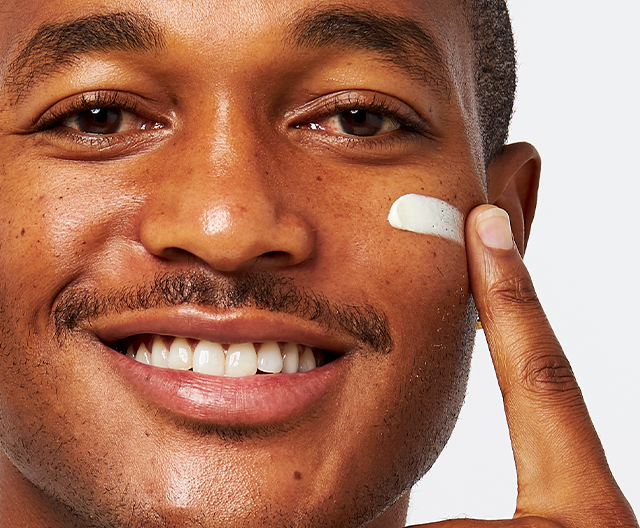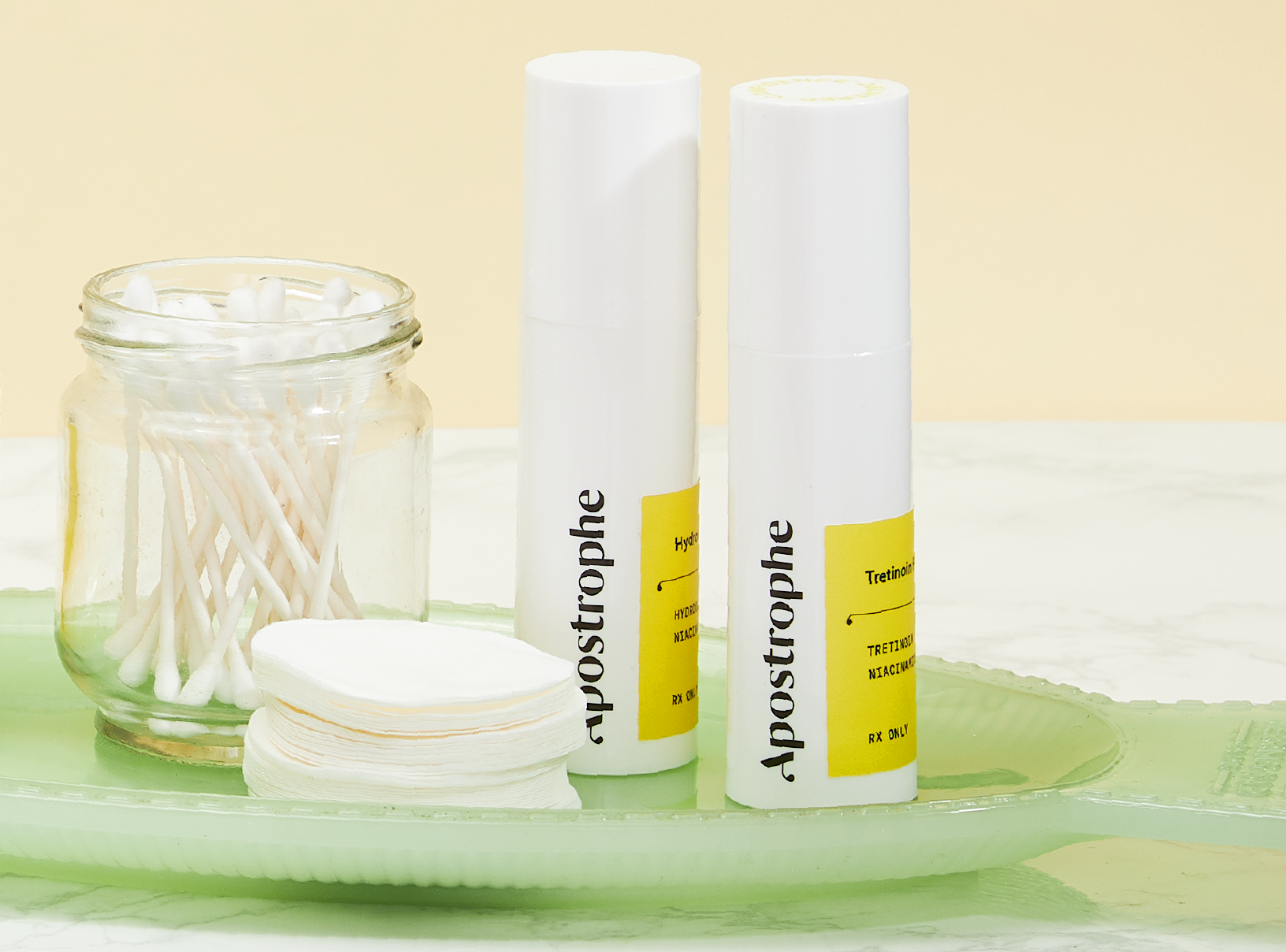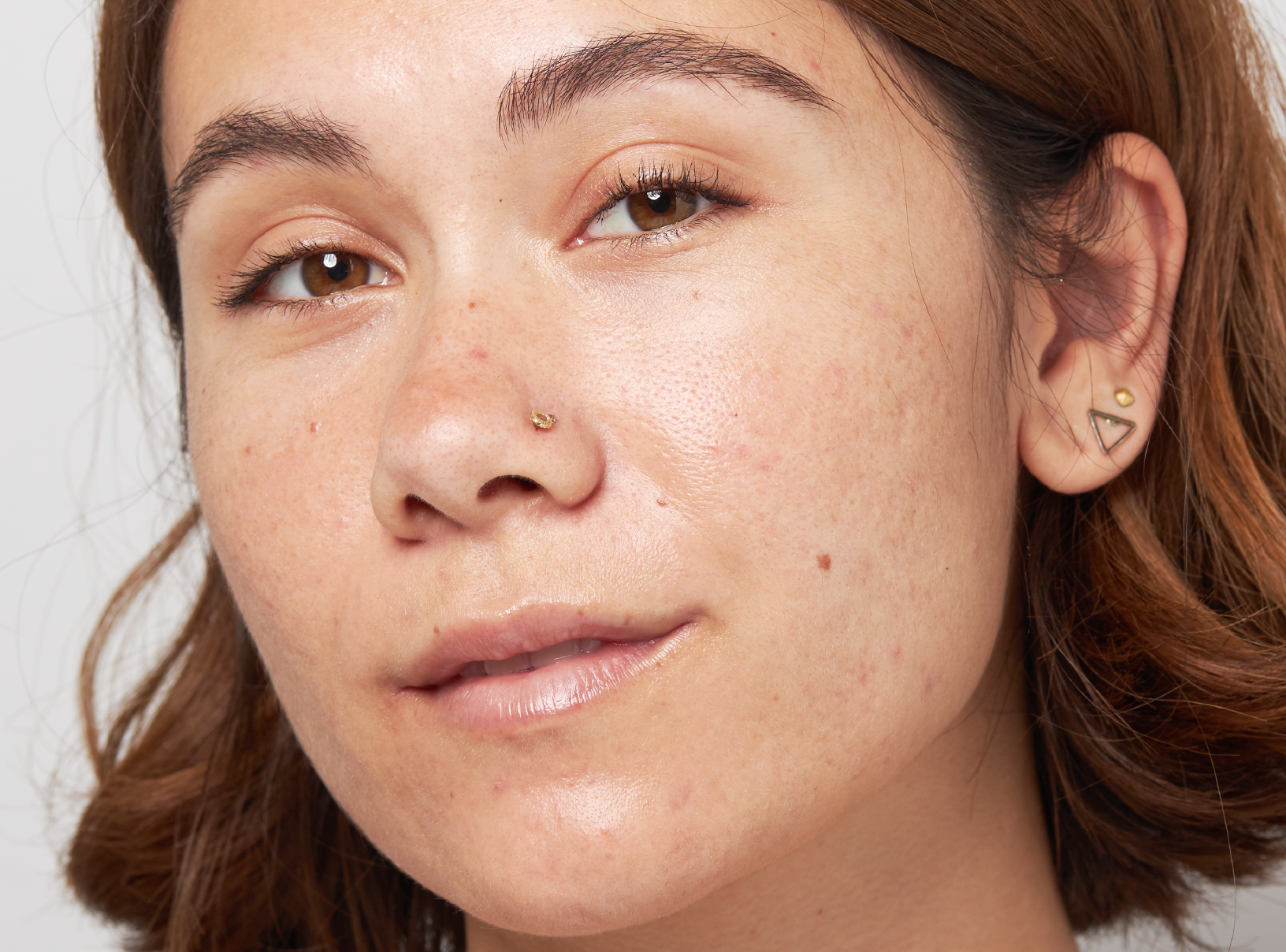Education
The Best Ingredients For Hyperpigmentation


SHARE
Education
The Best Ingredients For Hyperpigmentation
Medically reviewed by Aimee Paik, MD
Written by Annie Lam
Last updated 8/4/2024
Dealing with acne is one thing, but the dark spots it leaves behind can be stubborn and frustrating. Lucky for you, today we'll be sharing the best ingredients for hyperpigmentation and how to fade those stubborn dark spots.
What is hyperpigmentation?
Hyperpigmentation, or dark spots/dark patches on the skin, occurs when your skin produces too much melanin (the pigment that gives skin color). This skin discoloration is extremely common, so let’s talk about what causes this overproduction of melanin.
What causes hyperpigmentation?
As mentioned earlier, hyperpigmentation is extremely common and it can be caused by a variety of different reasons. Some of the most common causes are:
Acne breakouts
Many of you have probably experienced breakouts and the dark spots or marks that it can leave behind. Acne is a skin condition that has a tendency to cause inflammation (painful, red pimples, anyone?). This inflammation can leave behind a dark spot or mark, commonly known as post-inflammatory hyperpigmentation. This type of pigmentation will fade on its own with time, but some people may want to use targeted treatments to help it fade more quickly.
Hormonal changes
Hormones play a significant role in your skin, especially in the development of acne. However, hormonal factors can also stimulate melasma. Melasma is a form of hyperpigmentation that results in dark patches on the cheek, upper lip, and central forehead. It can even flare up during pregnancy (often called the “pregnancy mask”).
Sun damage
Increased sun exposure can lead to sun spots or “liver spots.” Hyperpigmentation from UV rays often looks like spots of darker skin. Sun spots can be either small or large, ranging from 2-3 mm to 1-1.5 cm. This kind of hyperpigmentation is quite common, especially if you're spending lots of time in the sun without proper sun protection.
Genetics
Genetics also play a large role in your skin. Just like how acne can run in your family, hyperpigmentation can also have a genetic disposition. If your mom or dad has freckles, the likelihood you'll also have them is higher. Freckles are completely normal and are oftentimes genetic, so embrace them if you have them!
While hyperpigmentation is very common, we understand that it can be frustrating seeing dark spots and uneven skin tone, so let's break down how to fade hyperpigmentation.
The best ingredients for hyperpigmentation
When it comes to treating hyperpigmentation, there are a lot of treatment options out there. From exfoliating acids like glycolic acid to skin brighteners like kojic acid and vitamin c, it can be hard to know what ingredients really help to treat hyperpigmentation. Since there are many causes of hyperpigmentation, it’s important to find a treatment that targets the type of hyperpigmentation that you have.
Over-the-counter treatments for hyperpigmentation
Over-the-counter skin care products can be found at your local drugstore or beauty retailer. There are lots of skincare products advertising to fade dark spots, but these are the ingredients we'd recommend looking out for:
Vitamin C
Vitamin c is an active ingredient that acts as an antioxidant to brighten the skin over time. It's a very popular skin care ingredient that can help with fading post-inflammatory hyperpigmentation while evening out the skin tone. We’d recommend using it alongside another treatment (like tretinoin or azelaic acid) for best results. A nice bonus is that many vitamin c serums can leave your skin looking healthy and glowy!
Exfoliating acids
Many exfoliating acids like glycolic acid, lactic acid, and mandelic acid can help remove dead skin cells from the surface of the skin. This can help with pigmentation by speeding up the cell turnover process to reveal fresh, glowing skin. Exfoliating acids can also help with treating post-inflammatory hyperpigmentation over time.
Tranexamic acid
Tranexamic acid has been found to be a promising treatment for melasma, according to this 2014 study. Tranexamic acid works by inhibiting melanin production, which can help fade patches of darker skin tone and brighten the skin. At Apostrophe, we offer a tretinoin + topical spironolactone + tranexamic acid formula that helps to treat hormonal acne and hyperpigmentation at the skin level.
Kojic acid
Kojic acid is another over-the-counter ingredient that can act as a supporting ingredient when treating hyperpigmentation. It acts as a potent antioxidant and can also help with inhibiting melanin production. It's great used alongside other hyperpigmentation treatments like hydroquinone.

HYPERPIGMENTATION TREATMENT
Target dark spots and hyperpigmentation with customized prescription treatment.
Prescription treatments for hyperpigmentation
If you're dealing with stubborn hyperpigmentation, we recommend reaching for the heavy hitters. Getting a prescription hyperpigmentation treatment from a dermatology provider can help you effectively fade those dark spots. Some of the best prescription ingredients for hyperpigmentation are:
Tretinoin
Tretinoin is a vitamin A derivative that helps to increase cell turnover and stimulate collagen production in the skin. This increase in cell turnover helps to fade post-inflammatory hyperpigmentation and even out skin tone. Tretinoin is one of the best ingredients to treat and prevent acne marks because it will help prevent new breakouts while fading dark spots over time. At Apostrophe, our tretinoin formula is custom-compounded with niacinamide to help even out skin tone.
Azelaic Acid
Azelaic acid is an ingredient that can be found over-the-counter at lower percentages, but higher percentages (15%) are available through a prescription only. Prescription-strength azelaic acid is stronger and more effective when it comes to treating post inflammatory hyperpigmentation, melasma, and even sun spots. This is a unique ingredient because it's gentle enough for sensitive skin and it's safe to use during pregnancy! It's a great gentle skincare ingredient for treating hyperpigmentation.
Hydroquinone
Hydroquinone is the gold-standard when it comes to treating hyperpigmentation. Hydroquinone helps to fade patches of darker skin by inhibiting melanin production in the skin. It's typically used as a targeted spot treatment to fade dark spots, melasma, or patches of pigmentation. Hydroquinone should be used cyclically and under the care of a dermatologist or healthcare provider for best results.
As you can see, there are lots of ingredients that can be used to treat stubborn dark spots and hyperpigmentation. We'd recommend consulting with a dermatologist or healthcare provider to get the right treatment for your hyperpigmentation. They'll be able to provide customized advice based on your unique skin and concerns.

CUSTOMIZED HYPERPIGMENTATION TREATMENT
Get customized treatment for your dark spots, melasma, and hyperpigmentation.
If you're looking to get access to expert treatment for your hyperpigmentation, acne, or signs of aging, we've got you covered. Your dermatology provider will use clinically-proven, prescription-strength ingredients to effectively treat your skin concerns. Get your own customized skin treatment through Apostrophe today.
Sources:
https://www.ncbi.nlm.nih.gov/pmc/articles/PMC4235096/
https://my.clevelandclinic.org/health/diseases/21885-hyperpigmentation
https://columbiaskinclinic.com/medical-dermatology/the-truth-about-hyperpigmentation/
Shop this post

Tretinoin

Finacea (azelaic acid)

Hydroquinone
Like what you just read? Sign up for our email list to get the scoop on skincare science delivered straight to your inbox.

Deep Dives
A dermatologist shares his thoughts on the recent studies about benzoyl peroxide and benzene.
Read More
Education
What is milia?
What is milia? Today, we’re jumping into one type of bump that you may have heard about most commonly in infants — milia.
Read More
Education
Best moisturizer for acne-prone skin
If you have combination acne-prone skin, figuring out which moisturizer is best for your skin might be tough. In this guide, we break down the best moisturizer for combination, acne-prone skin.
Read More